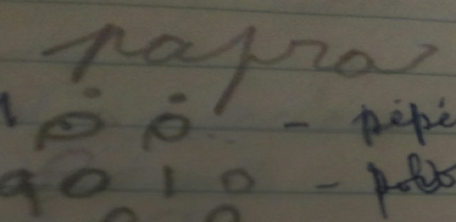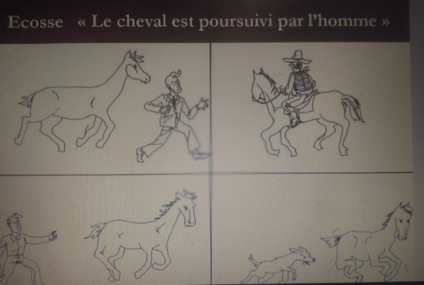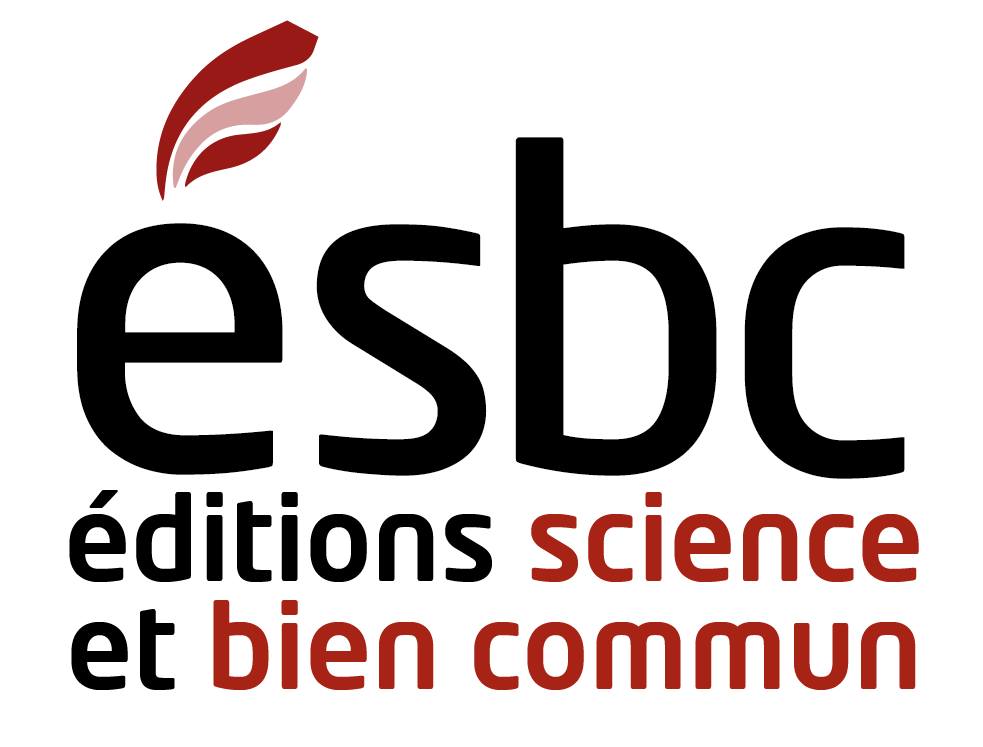9 Dysphasia in Schools: Signs, Production and Comprehension Disorders
Stéphanie FLORVIL
|
Abstract/Rezime This study is being done as part of a research project that GIECLAT is conducting in partnership with the Ministry of Education via CASAS, the LangSÉ laboratory and INUFOCAD. As indicated in the title, the study focuses on the issue of dysphasia at school. We discuss some production and comprehension disorders, via their manifestations, in a school context, particularly in schools in the southern department. The data were collected in four schools located in the southern department. Keywords: dysphasia, handicap, pedagogical practice, teacher, student, educational system Etid sa a fèt nan kad yon rechèch GIECLAT ap mennen nan yon patenarya avèk CASAS, laboratwa LangSE ak INUFOCAD. Jan sa endike nan tit la, objè etid sa a gen pou l wè ak fenomèn disfazi nan lekòl. N ap prezante ki jan difikilte pou konprann ak pwodui manifeste kay timoun ki nan sitiyayon disfazik nan lekòl, espesyalman nan depatman Sid Dayiti. Done yo kolekte nan 4 lekòl ki se lekòl nasyonal chadonyè, lekòl presbiteral chadonyè, EFACAP ak lekòl evangelique mixte tabernacle de Port-a-Piment. Etid sa a konsène 123 elèv ki nan laj 6-15 zan. Mo-kle : Disfazi, andikap, pratik pedagojik, anseyan, elèv, sistèm edikatif. |
Introduction
Dysphasia is defined as a fairly significant delay in the use or understanding of verbal or written language (Clark and Kahmi, 2016). It is a neurodevelopmental disorder affecting verbal expression and can affect several areas of a child’s life. It is an abnormality whose degree of severity varies from time to time. Some authors consider this anomaly to be a significant deficit in the production and/or understanding of language, without the diagnosis of a general cognitive deficit, sensorimotor deficits or a general lack of exposure to language (Léonard, 1998; Verhoeven and van Balkom, 2004). Others refer to dysphasia as a cluster of persistent disorders with different subtypes because of the many differences in the clinical profiles of dysphasic children (DSMIV-TR, APA, 2003; Albaret and Castelnau, 2009). Dysphasia is in principle a speech disorder that results from neurological dysfunction, particularly affecting verbal communication and language comprehension in a child. The majority of those afflicted are boys. This disorder can affect or manifest as at different levels of language: form, content and meaning.
In response to this question, our hypothesis is as follows: when students are unable to speak and understand because of this language anomaly, it interferes with their cognitive processes and affects their progress at school.
Objectives and methodological points
We adopt the theoretical framework of Mazeau’s dynamic approach, according to which dysphasia, in addition to being an early-onset structural deficit, interferes with the child’s overall developmental process (Mazeau, 2005; Witko & Mollat, 2009).
Young students were chosen because of their difficulties in producing and understanding speech in a learning context to try to test the hypothesis. We focused on the way they read certain words, additions, omissions, and the interpretation of various images, not to mention the impact on their behavior.
Data collection tools
We collected data over a five-month period and our main tool was testing. Two tests were administered: first, a reading and writing test to assess the language skills of the students targeted in the production, and second, a test from Elisabeth Schweitzer’s book (2012: 28) to test listening comprehension.
To carry out the first test, a sequence of words was chosen from the students’ respective reading books. They were asked to read and write these words. These words were chosen because of their phonetic similarity. As for the second test, it provided an opportunity to evaluate the level of sign recognition from the image. A sequence of images in a table divided into four parts was proposed. The students were asked to describe what they saw and explain the sequence of what is happening through these images. Given that these students live in an environment where domestic animals are common, we chose images of animals and agricultural workers to confirm whether there is a problem with the comprehension and production of oral messages among this audience.
Data and interpretation
Sample Identification of Dysphasia
Of the 123 students who were observed in AF1, AF2, AF3, 81 were male and 23 female.
- 73, or 59.34%, had a production disorder;
- 17, or 13.7%, had a production and comprehension disorder, observed at the time of image recognition;
- 33, or 26.82%, had other disorders.
Production disorders
These students had major difficulties. While reading, there were motor errors in the use of several phonemes. In some cases, phonemes are omitted in reading. Structural phonological errors such as additions, confusions, omissions, replacements, and repetitions were common. Errors in the construction, use, representation and organization of syllables in oral and written language, poor reproduction and formation of sounds and words were observed.
Although dysphasia primarily affects oral language, it influences reading aloud significantly due to the interdependence of reading and writing in the school setting (Schweitzer, 2012). We proposed a writing activity where students would write the words read to them, and obtained the example illustrated in the picture below:

Comprehension disorders
The comprehension disorder is mainly characterized by a misinterpretation of the narrative, the correspondence of grapho-phonological signs or the recognition of images. During the test, students were unable to identify animals that apparently exist in their surroundings and to describe what was happening because they did not understand.
Below is a table and an extract of some misinterpretations reflecting the cases of misunderstanding mentioned:

The setting suggested by this image seemed familiar to the various students in our sample; however, very few of them managed to name the elements of the content. The majority of the students were unable to establish a relationship between the image and the language needed to describe the sequence of events. This test allowed us to identify the problems of expression and reception that these students suffer.
Psychological and personal impacts
Students with these language handicaps are subject to serious personal and collective problems. The difficulties encountered on the academic level seem to affect not only their cognition but also their social situation through behavioral problems. Cognitively, they have problems that block their learning momentum and attention; and psychologically and personally, there is a lack of self-confidence. When we observe them in the classroom, especially during lectures, we notice that they move around a lot, and get lost in their thoughts. They don’t participate in the exercises when the teacher asks the class to do so. When they are addressed personally, they are surprised and disturbed.
These students also have memory problems. They often fail to learn even basic sounds of letters, and if they do, they soon forget them.
In terms of interpersonal activity, some of them always stay apart. They do not speak to others and remain closed in on themselves. Others are very mischievous and aggressive. They bicker and argue all the time.
Conclusion
Whether dysphasic students have neurological disorders or not, it is important to consider how to help them learn and thrive. Very often, those who face this disorder are seen as stupid. However, paying attention to their needs and providing them with a specialized and adaptive structure may allow them to attain average learning levels and progress. Dysphasia in itself does not block a student’s access to knowledge. It is above all the lack of care and adaptive teaching strategies that causes problems. Thus, the students being observed in our investigation were in difficulty not because they suffer from this anomaly, but because their teachers do not seem to be fully aware of the problem they face. The methods applied by their teachers are very often inappropriate. The students are in this case without effective help and recourse capable of allowing them to live school life without any complexes.
In light of the above findings, it is necessary for school officials to adjust system and infrastructure to the specific needs of each student, and to help teachers put in place appropriate pedagogical mechanisms to teach and support all children.
References
Albaret, Jean-Michel et al., (2009), “Place des troubles de la motricité dans les troubles spécifiques du langage oral”. De Boeck Supérieur, Développements, no. 1, pp. 5-13.
American Speech-Language-Hearing Association, (1993), “Definitions of communication disorders and variations”.
http://www.asha.org/docs/pdf/RP1993-00208.pdf
Clark, Mary Kristen M.S. & Alan G. Kamhi, (2016), Troubles du langage chez l’enfant, University of North Carolina at Greensboro.
DSM-IV-TR, American Psychiatric Association, (2003), Manuel diagnostique et statistique des troubles mentaux, 4e édition, Paris: Masson.
Leonard, Laurence B., (1998), Children with specific language impairment, Cambridge: MIT Press.
Mazeau, Michel, (2005), Neuropsychologie et troubles des apprentissages. Du symptôme à la rééducation, Paris: Masson.
Schweitzer, Elisabeth, (2012), “Les troubles du langage oral et écrit”, FMC Pediatrie-Clocheville.
Verhoeven Ludo & Hans van Balkom, (2004), “Classification of developmental language disorders”, D. V. M. Bishop, Specific language impairment, University of Oxford.
Witko, Agnès & Aline Mollat, (2009), “Des images aux mots : une approche des troubles spécifiques du langage à partir d’un partenariat orthophoniste/psychologue du développement”, Développements, volume 2, no. 2, pp. 35-47.

